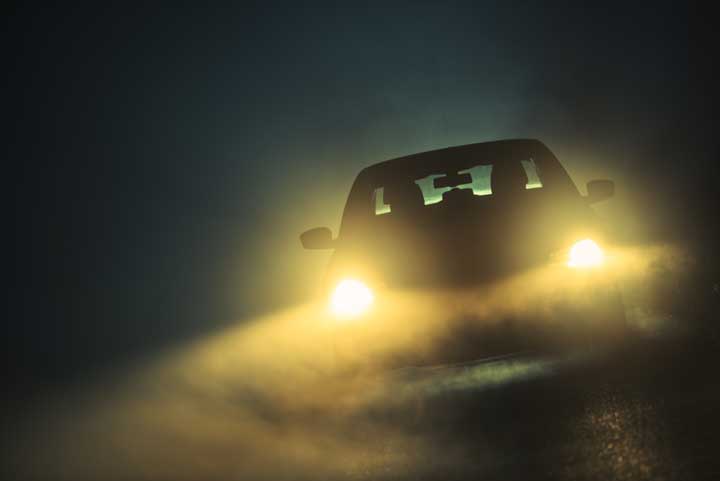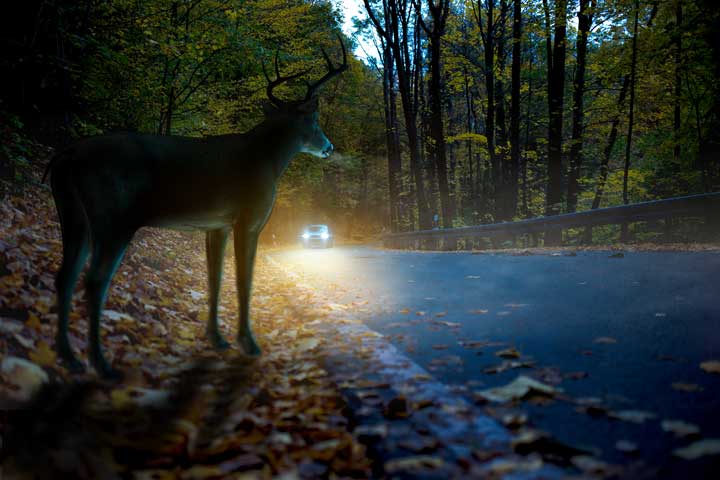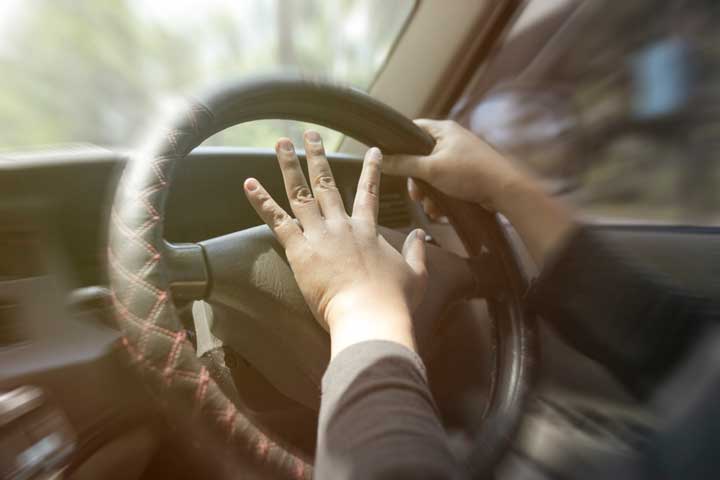Between July 2017 and June 2018, somewhere in the vicinity of 1.3 million deer found themselves on the wrong end of a car. The majority of those accidents take place during the deer mating season.
What makes these accidents curious is how, often, the animal might have evaded the accident if it just got out of the way. But it’s a fact a deer may not react to the sudden appearance of bright light bearing down on them.
Let’s take a look at why do deer freeze in headlights.
Is It About the Headlights?

“Headlights” is the operative word.
What usually happens is you’re rolling down the highway or a dark road and suddenly find a deer in front of you. It will stare your way and … just look. This is automatic behavior.
Statistics show you are most likely to strike a deer between the fall and winter during the hours of six and nine in the evening and at dawn.
In other words, a car is more likely to collide with the deer under conditions where light is low.
Deer are active during this season and these times of the day. That’s not to say accidents won’t happen in the off-season. It is just more likely to happen during these periods when deer need to rely on night vision.
So Why Do Deer Just Stand There?
Deer are crepuscular, according to the Kentucky Department of Fish and Wildlife Resources. With their activity peaks falling an hour or so after sunset and before sunrise, they spend a lot of time moving around under very low light.
Attempting to adjust their deer eyes to dim light, the animals cannot react quickly enough to a sudden burst of brighter light.
Imagine going to the bathroom in the middle of the night, flipping the light switch, and needing to adjust your vision. There is always that moment of the freeze response.
That’s what commonly happens to the deer caught in a headlight beam. The creature’s moving around and suddenly realizes there’s a light.
The problem is, as deer vision has adjusted to light at night, they don’t freeze so much as try to comprehend what’s going on. So, they stare at headlights, waiting for comprehension to set in. Hence, the potential threat greatly increases.
The University of Georgia tested the vision of whitetail deer and discovered, by human standards, the deer is possibly legally blind.
According to the institute’s findings, a person with a normal 20/20 field of vision can see objects at a distance of 200 yards.
The deer will have to be within 20 yards to discern what’s going on. With that in mind, deer pupils don’t get the time they need to rationalize actual danger. Hence, the deer car collision.
Is It True Mating Season Plays a Part?
Many deer-related accidents happen during the breeding season, which takes place in the fall. Often, the male deer are searching for females in retreat.
Now, as the deer is somewhat nocturnal, their major movement takes place in the dark. This increases the chance of the animal ending up in the middle of the road staring at headlights.

Do Deer Have Poor Vision Then?
Actually, that’s not true. As a hunter, I can tell you a deer has a pretty good sense of its visual surroundings.
Using normal eyesight, human beings can see at angles of 120 degrees. The deer can see at 300 degrees. With a slight shift of the head, they increase their peripheral by 60 degrees.
But this doesn’t mean the deer has great vision either. Compared to the ideal 20/20, a deer’s vision can be as poor as 20/100.
A deer can sense when something’s around them but are unable to focus on it until they turn and point their noses up.
Deer do see colors better than human pupils. And they aren’t color blind as once believed.
Why Do Deers Run/Jump in Front of Cars?
Sometimes, it appears deer come out of nowhere to run towards or into a vehicle, seeming to place themselves in danger deliberately. This is not necessarily the case. Deer have extremely sensitive hearing and flight response.
Sounds — like the sounds of traffic — can send deer running. But they become confused about where to run. So, the biggest reason deer “jump” in front of us is because they’re scared as they cross roadways.
What Can I Do to Prevent Hitting a Deer?
Here are some ways you can avoid hitting deer who stare at headlights.
Keep an Eye Out If You See One
Deers travel in packs. If one manages to cross safely in front of you or you spy one nearby, slow down. There is a very good chance a deer may follow, often darting to catch up.
Remember Deer Habits
Deer are active at dawn and dusk. Slow down, stay alert, and keep your eye on yellow road signs that warn of deer crossing.
Use Headlights
The eyes of deer will glow brightly in the beams of your headlights. That can help make spotting them easier. If you’re not traveling too fast, this may give you enough time to stop.
Center Your Vehicle
The centerline is the safest place to be on a multi-lane road. This gives deer plenty of space. It also gives you more time to react should a deer dart in front of you.
Don’t Swerve, Brake
If you do find yourself staring down a deer, brake calmly and firmly.
If you’re on a narrow pathway, stay true. Swerving too quickly can cause a loss of control. You’d only make a bad situation worse.
Deer are unpredictable. Should the deer react, there’s the potential threat of you swerving into them anyway.
Honk

They may have poor vision, but the deer has extraordinary hearing. A good, long blast of the horn may scare the creature out of the road.
Forget hood whistles and such engineered to scare deer. They do little when hoping to minimize deer car collisions.
Conclusion
So, why do deer freeze up in headlights? Now you can better understand that there are many reasons. Millions of deer are in accidents annually, resulting in personal injuries. A deer-car collision can be minimized. Know when you’re in a deer-populated region, use high beams after spying a warning sign on the road, and, of course, drive carefully.




